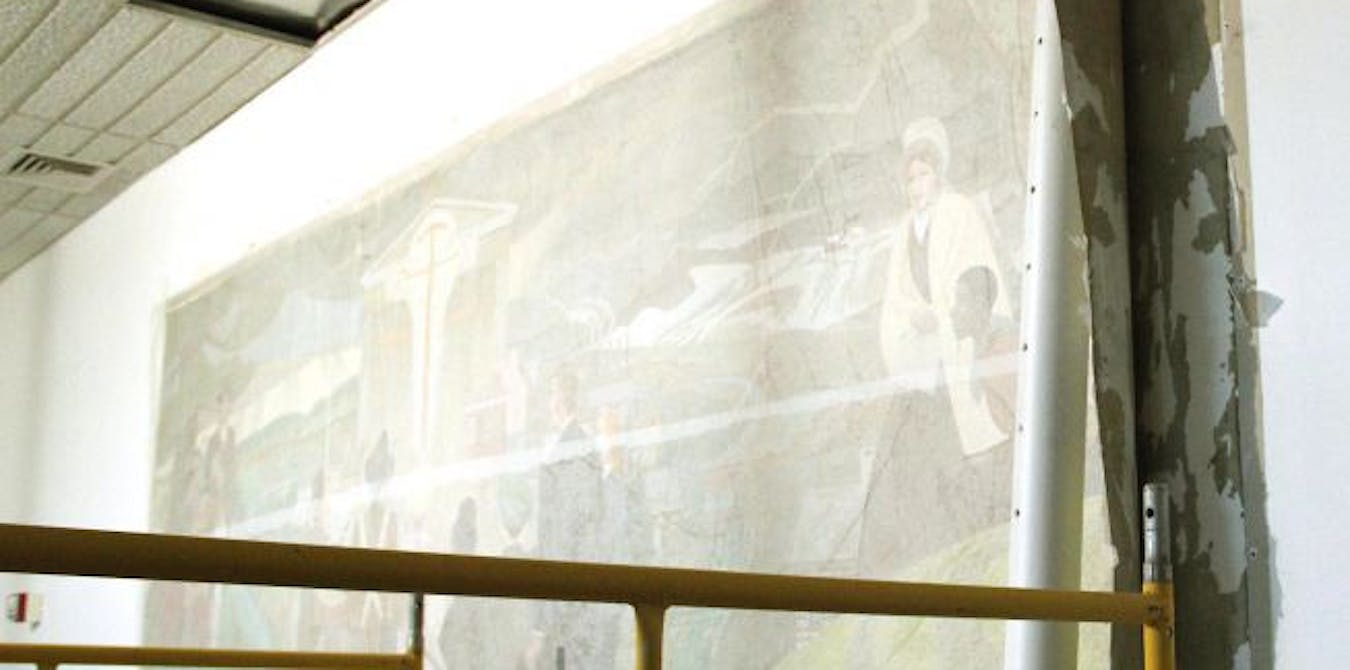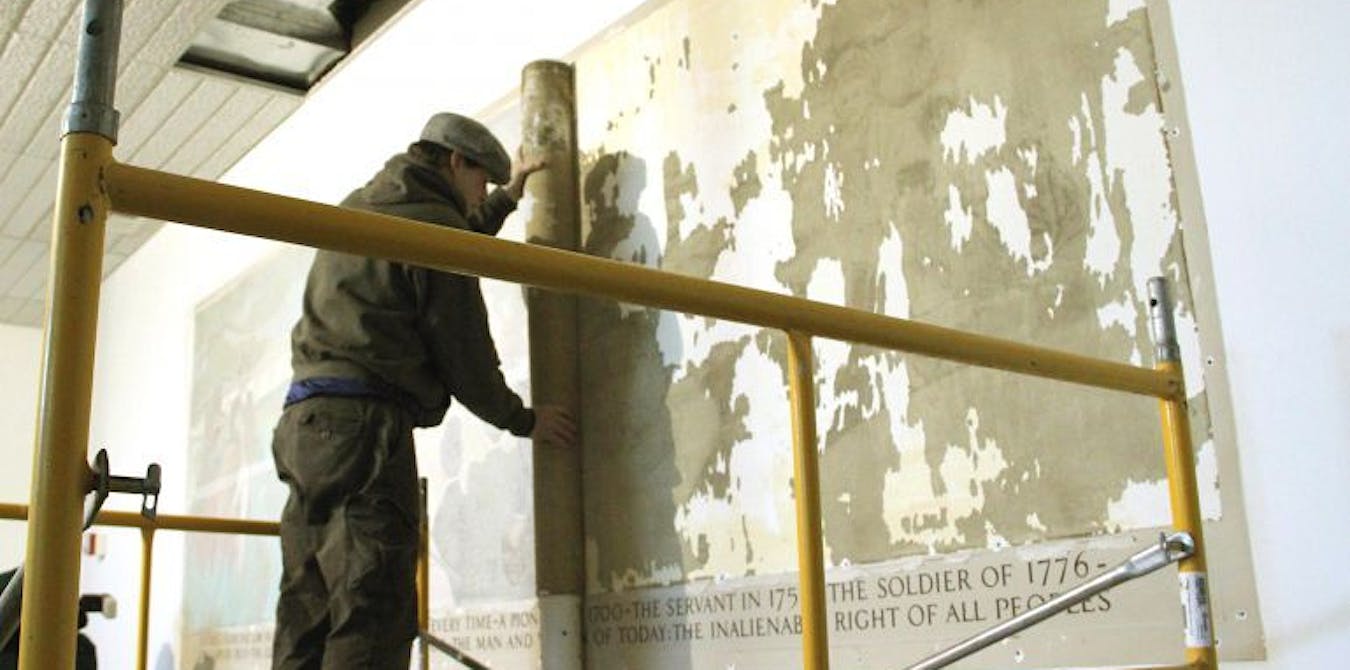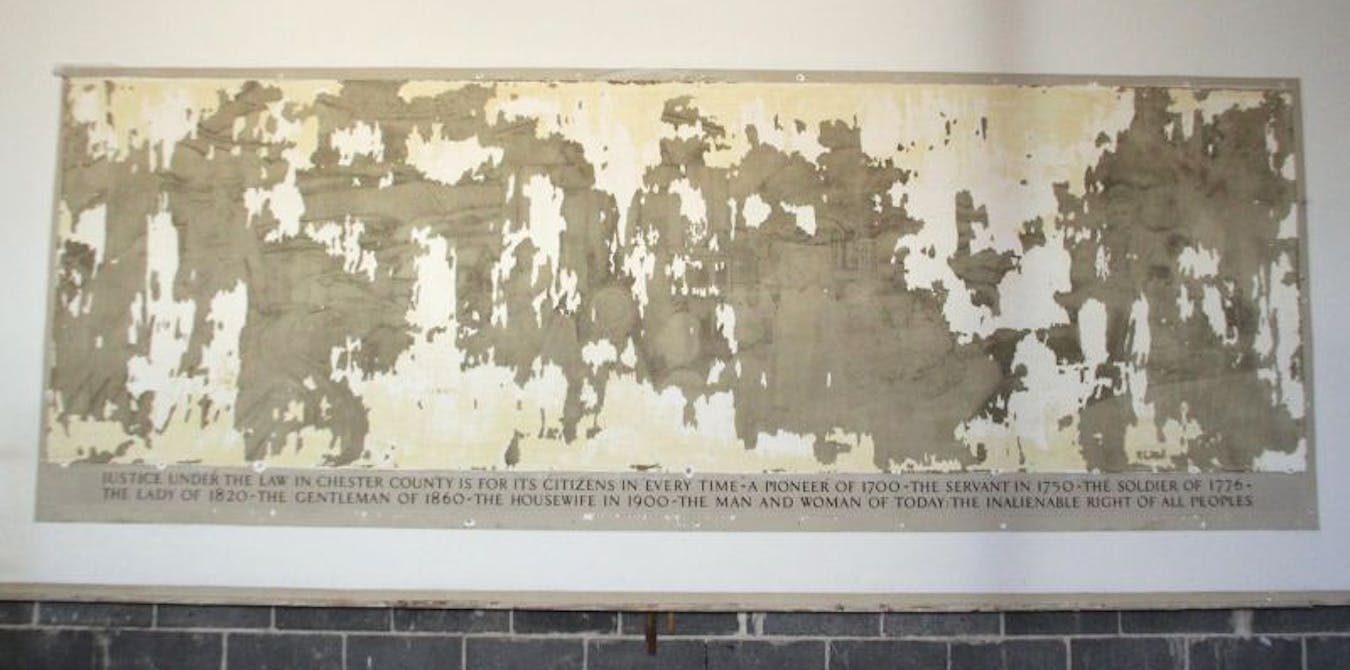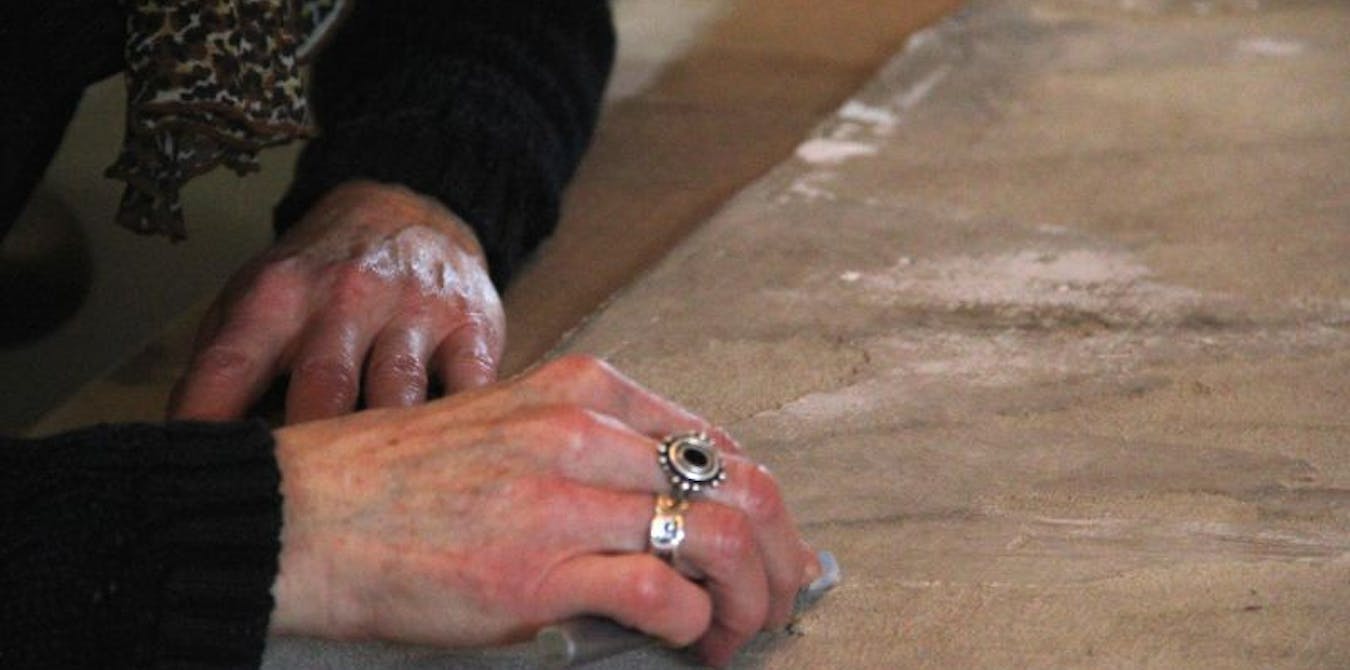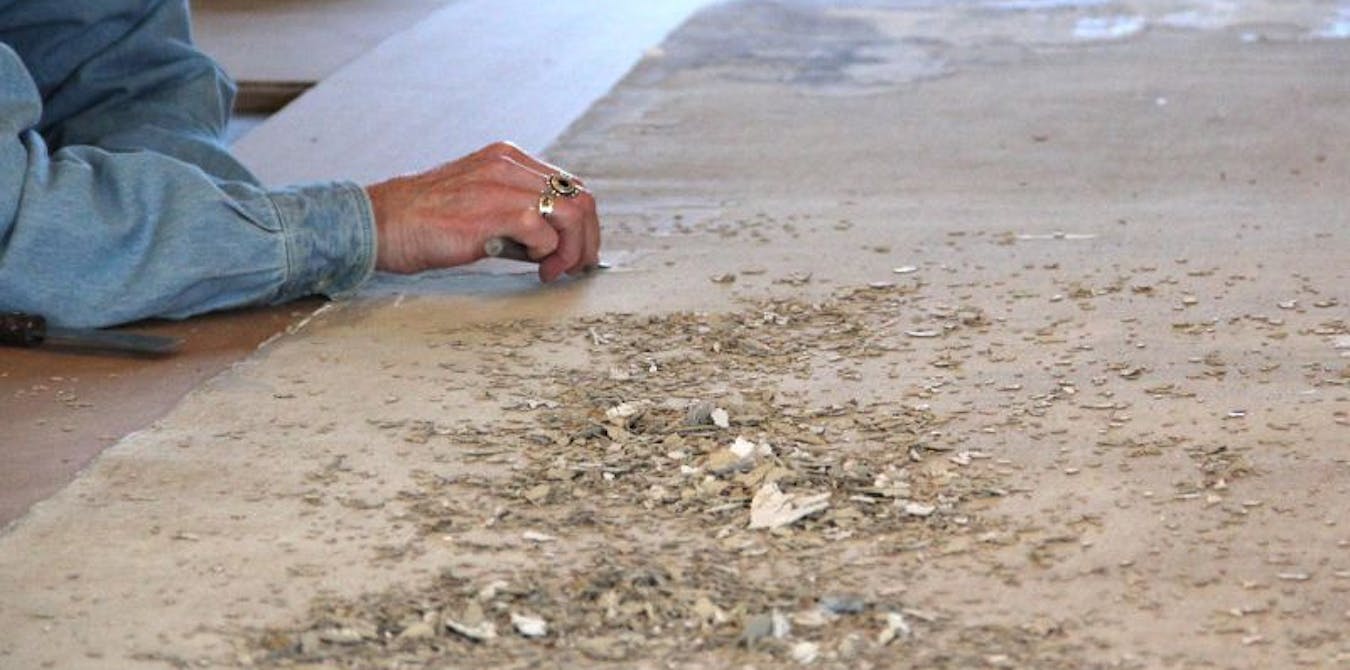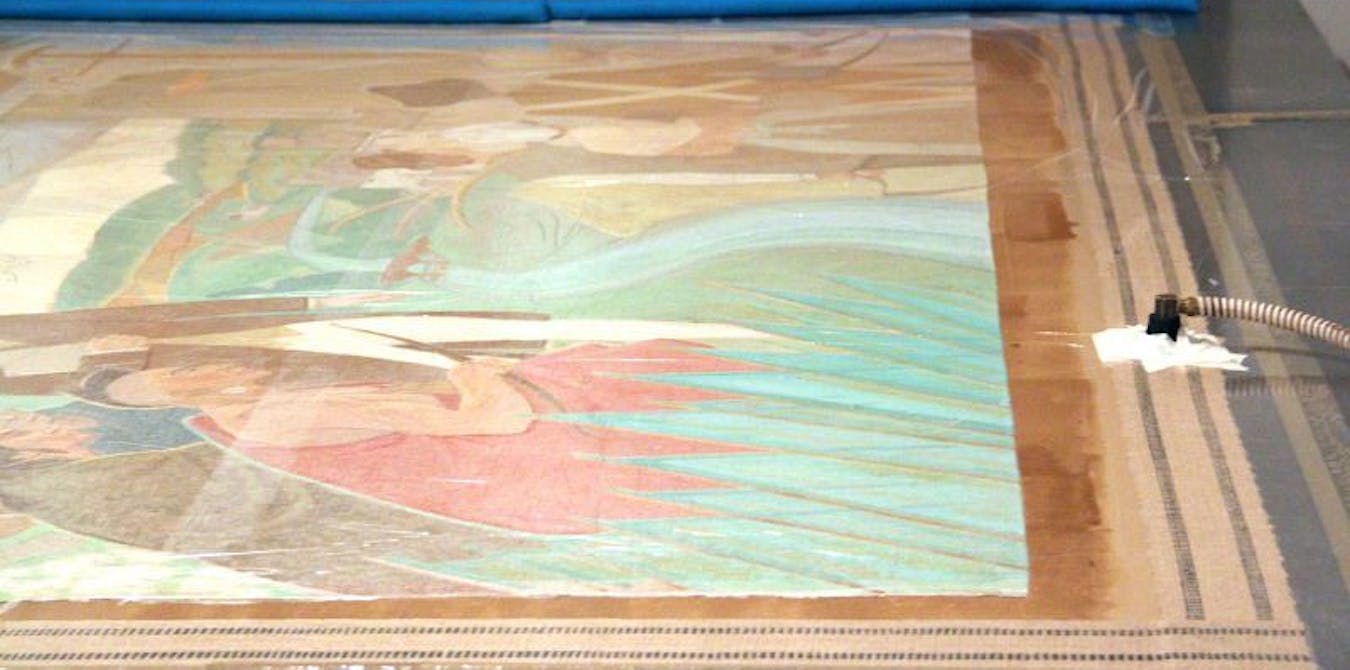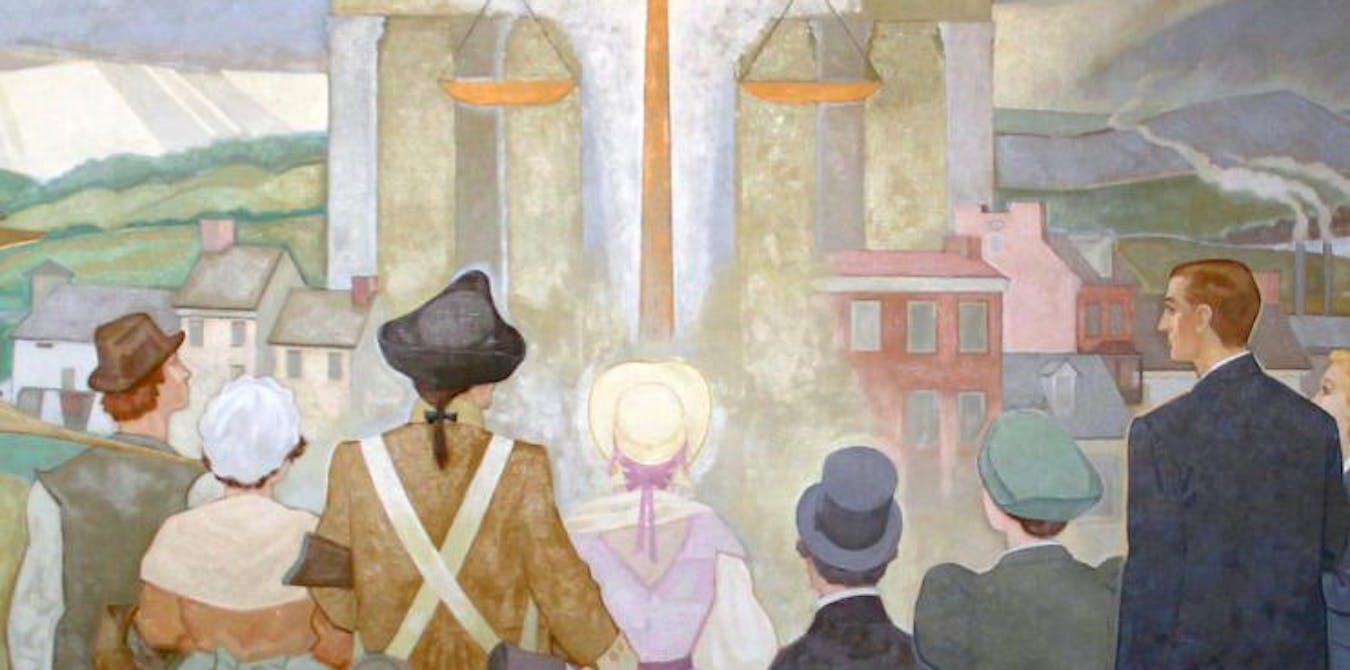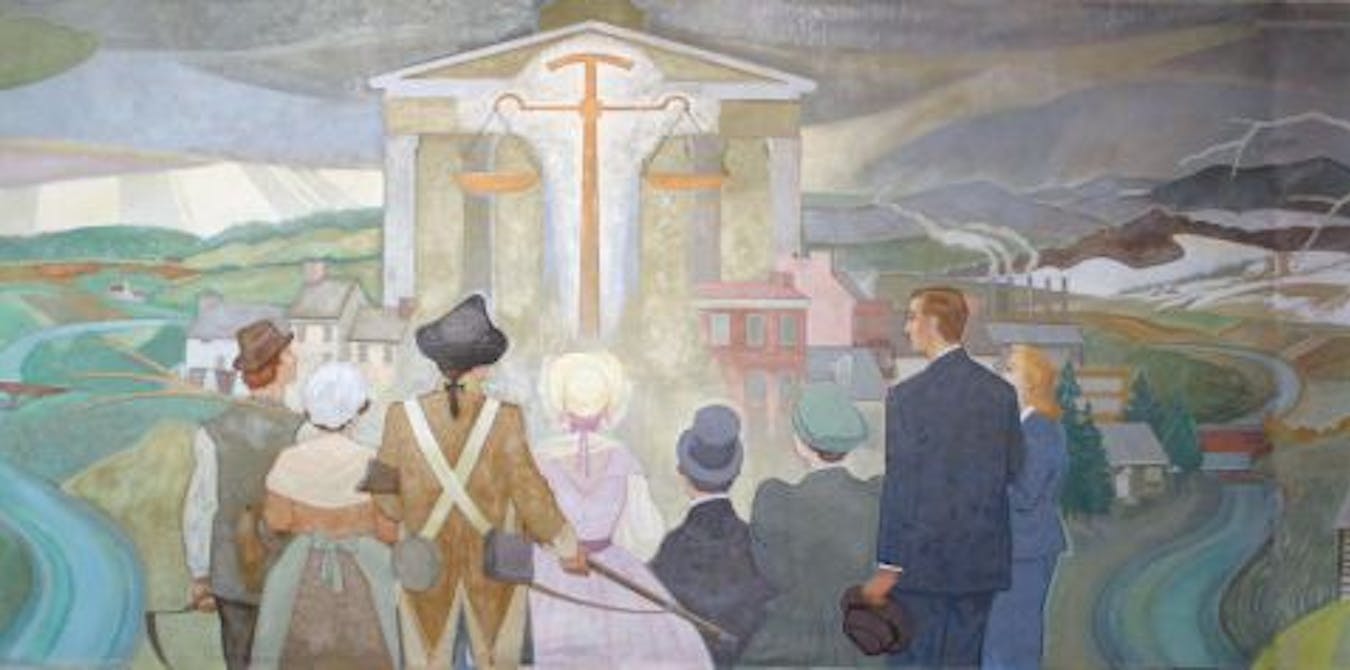Reclaiming a Massive Mural, Inch by Inch
The art: Chester County Courthouse Mural
The restoration: With an extensive renovation of the courthouse planned, we were commissioned to restore a five-foot by 16-foot mural so that it could be hung in the new generation of the building. It was dirty and it had a number of areas where the paint had eroded. But the sheer size posed the greatest challenge.
The painting was faced with Japanese tissue paper and coated with a thin layer of liquid BEVA 371 Solution to stabilize the brittle paint as the mural was removed, packed, and transported. The canvas was then carefully detached from the wall with a scalpel and wrapped around a large plastic tube.
Back at the studio, bits of glue and plaster that remained attached to the verso of the canvas were scraped off with a scalpel. Every piece of extraneous material had to be removed to ensure a smooth relining, or affixing a new backing material to the canvas, enabling the paint to receive a moisture treatment and stabilize. Because of its size, the mural was relined in sections.
The relining complete, the cleaning began. Solvents were applied with cotton swabs, which saturated the tissue paper and broke down the BEVA. From there, the mural was cleaned square inch by square inch using cotton swabs. The solvents were gradually increased so as to ensure that the pigment wasn't distorted.
In-painting followed. It entails filling in the areas of missing paint in a manner that remains true to the artist's intentions. Special care was taken to match the pigments as closely as possible. Two layers of varnish are applied to the entire mural, one before the in-painting, to separate the original from the art conservation work, and another immediately after.
The canvas was then rolled around a plastic tube for safe transport back to the museum, where it was mounted on a stretcher—another twist to accommodate the massive size—and hung.

